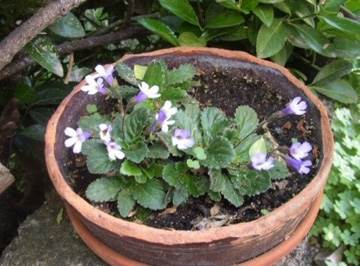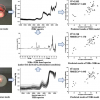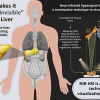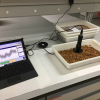
A small group of plants known as “resurrection plants” can survive months or even years without water. Researchers in Japan and Bulgaria have used near infrared (NIR) spectroscopy and aquaphotomics to monitor the entire processes of drying and subsequent rehydration of one such plant, Haberlea rhodopensis. Results were compared to the same processes for its non-resurrection relative. The results showed that during drying, the resurrection plant performs fine restructuring of water in its leaves, preparing itself for the dry period by accumulating water molecular dimers and water molecules with four hydrogen bonds, while drastically diminishing free water molecules. This regulation of water structure is thought to be the mechanism of how the plant preserves its tissues against dehydration-induced damages and allows it to survive in the dry state. The discovery that water structure is important for preservation of the plants during drought stress opens up a new direction for bioengineering and improving the drought tolerance ability of plants. The research was published in Scientific Reports.
When Haberlea rhodopensis was losing water, it kept the number of free water molecules, water dimers, trimers and more hydrogen-bonded water molecules in the same ratios. While the numbers of these molecules diminished, their relationship was kept constant, suggesting orchestrated efforts by the plant to keep the water in a certain state. Such ability was not observed in Deinostigma eberhardtii, and the ratios of water species in its leaves randomly fluctuated.
Drastic differences of the water structure in the leaves were observed when both plants were in the completely dried state. In this final phase, Haberlea rhodopensis radically diminished free water molecules and accumulated water dimers and water molecules with four hydrogen bonds. Deinostigma eberhardtii, in contrast never showed any such radical transformation of water structure. Up to the very last moment, even in the completely dried state it still had a lot of free water molecules, but now involved in spoliation and decay processes.
During rehydration, Haberlea rhodopensis showed the same orchestrated dynamics of reorganisation of water structure, by performing orderly incremental changes of almost all water species.
This research showed for the first time that the structure of water, not its content, is what matters to the survival of the organism. When people think about life, we often associate dynamic features with the processes in living systems. And yet, in this peculiar plant, in the absence of visible signs of ongoing metabolism, achieving a specific water structure was its survival tool.
As a result, the study sheds some light on what may be the most fundamental feature of a living system: it is the structural organisation, rather than the dynamics, that is at its core. And the structure of water is shaped by the numerous substances produced in the cells. These may be sugars, amino acids or other biomolecules, but their final goal is achievement of a certain state of water molecular structure which allows the preservation of tissues and prevention of damage.
This research adds to our growing understanding of the mechanisms by which some organisms achieve their remarkable tolerance to extreme dehydration. It has discovered a target for modification in order to achieve better tolerance to drought in plants, which obviously can be achieved using different strategies (sugars, amino acids, proteins etc.) as long as they exert such influence on water molecular structure that would lead to decrease of free water molecules and increase of hydrogen bonded water. The aquaphotomics NIR spectroscopy method allows direct, non-destructive insight into the living processes and water structure and dynamics in real time and is as a valuable new tool for studying not only the abiotic and biotic stress in plants, but many other phenomena in living systems.














